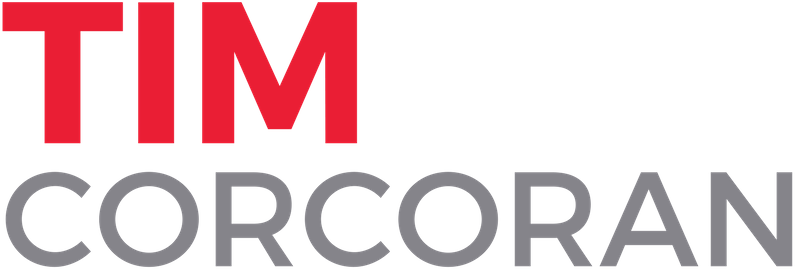Law firm compensation plans are by and large unsophisticated, hard to administer, too subjective, opaque, and reward the wrong behaviors. As someone wise once said, "If your compensation plan is in conflict with your strategy, your compensation plan is your strategy." To generate maximum financial performance in a law firm, and achieve the highest level of client satisfaction, we need to re-align the incentives. I've said a great deal about the deficiencies of law firm compensation plans (here and here and here). A good plan should further the firm's strategy, be easy to administer, and both drive and reward the desired behaviors. Many miss the mark on one or more of these dimensions. Here are the typical challenges I observe:
No alignment with strategy. Our strategy establishes one set of goals; the compensation plan rewards other, often entirely opposing, activities. We're a full-service law firm for our clients, but we don't track or reward cross-selling. In fact, we create internal competition and ill-will by forcing partners to take a pay cut when they bring others into their relationships. We wish to expand into new practice areas and geographies, but we punish the partners brave enough to lead an expansion because their short-term economic contribution suffers. We want everyone to get out of the office and become a rainmaker, but we pay partners primarily to stay in the office and bill time. We promise clients seamless transitions when partners retire or depart, but we punish partners who introduce younger colleagues into key relationships by requiring them to split credit. We promote our client focus, but we pay for hours, not efficiency.
Limited transparency. Some firms share compensation amounts among all equity partners. Others share nothing. Some firms have lengthy compensation plan documents. Others make all decisions in a closed-door session involving a select few. Some offer helpful scenarios to guide partner behavior in matters such as fee-splitting. Others trust partners to figure it out. What most miss is that transparency is not the same as having an open or closed system (sharing, respectively, all or no compensation details). Transparency is about establishing clear direction as to which behaviors we reward, and in what proportion, and doing so well in advance of the desired behavior. More than one managing partner has been shocked to discover that many, if not most, partners are unclear on the firm's primary compensation drivers. This is management shortcoming, not a result of dim bulb partners.
Poor or insufficient metrics. Some financial metrics are easy to come by, such as billed hours or collected receipts. Others are more elusive, such as timekeeper or client profitability. Still other metrics are more directional in nature, such as cross-selling (we may know the client worked with another practice group, but we don't necessarily know whether the relationship partner drove that). Some behaviors have only subjective metrics: serving as a good mentor? community involvement? acting in the best interests of the firm? A solid plan has specific metrics tied to the desired behaviors, and a clear and sustainable methodology for measuring performance in more subjective areas.
Inconsistent or incomplete reporting. When the compensation drivers are established, they should be published and then periodically the metrics tracking performance should also be published. Why not monthly? It serves little purpose to provide no metrics until year end, or provide vague or incomplete metrics at uncertain intervals during the year. It's hard make a course correction if we have neither a map of our destination nor our current coordinates.
Failure to acknowledge self-interest. We all want to earn a healthy living. But just as partners are loath to discuss budgets with clients, many avoid compensation discussions until required to do so by executive or compensation committee fiat. There's nothing wrong with wanting to know what specifically I can do to increase my compensation -- especially if the management committee has aligned the comp plan to strategy, so maximizing compensation furthers the strategy! Also, far too often top rainmakers or management or comp committee members prevent meaningful discussions of compensation plan changes because they fear losing income. While a revised plan may indeed result in changes to some partners' compensation, if the outcome is improved financial performance for all (and improved client satisfaction), then it's bad form and quite possibly a breach of fiduciary duty for those at the top of the pay scale to refuse to review alternatives.
Pursuing a disruptive implementation. If we identify a better compensation approach that serves the partners' and the clients' interests, it's statistically improbable that everyone will make the same. The change may be good. Some partners who are more comfortable billing time might be quite pleased with a plan that offers more certainty but less potential. Rainmakers may enjoy growing their books of business without being tethered to the billable hour. But some change may be troubling: some may see a compensation decrease commensurate with a declining trend in economic contribution. But we don't have to make these changes all at once. We can establish the end-state and then migrate to it over several years, providing training or transition support to those who might be significantly disrupted by a new plan.
Incomplete modeling. By nature, any forecast is speculative. To change a compensation plan means applying numerous "what if" scenarios to current performance, with no guarantee that we will sustain our current level of performance. We also don't know if, or how quickly, an adjustment to, say, origination credit will grow the pie. We don't know for sure how many partners will defect if their compensation will decrease, because the market dictates whether their economic contribution is more valuable elsewhere than here. They may already have the greenest grass they'll ever see. So we must model numerous factors, using realistic variables, and then create a few versions of the future. Failure to do this may result in significant disruption and unrest, and risk-averse lawyers tend to become flight risks during times of uncertainty.
Big dog accommodations. Every firm has one, if not many, partners who are the top of the food chain and who are somewhat blasé or even outright hostile to firm policies. Nothing creates organizational turmoil than when senior leaders or big dogs are allowed to break rules that little people must follow. When a top rainmaker threatens to leave, sometimes the best response is to say goodbye. When new compensation policies are put in place, it may be reasonable to make certain accommodations for those who feed others. But there's a limit. The behavior we desire should be incorporated into the compensation plan, and there's no room for unwritten rules.
A compensation assessment or redesign can be an extraordinarily effective tool to improve financial performance, foster a client-focused and collaborative culture, reduce unnecessary distractions, and provide a roadmap for career success. Expecting smart people to somehow "figure it out" is lazy management. Build the future you want in your law firm. Start today.
Timothy B. Corcoran is principal of Corcoran Consulting Group, with offices in New York, Charlottesville, and Sydney, and a global client base. He’s a Trustee and Fellow of the College of Law Practice Management, an American Lawyer Research Fellow, a Teaching Fellow at the Australia College of Law, and past president and a member of the Hall of Fame of the Legal Marketing Association. A former CEO, Tim guides law firm and law department leaders through the profitable disruption of outdated business models. Tim can be reached at Tim@BringInTim.com and +1.609.557.7311.





